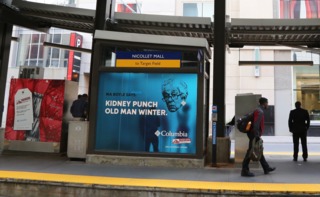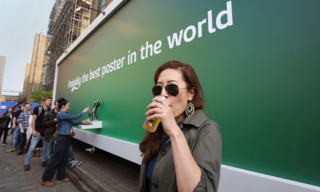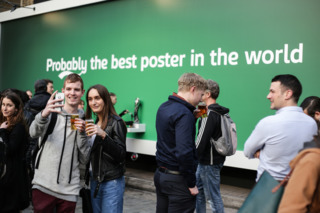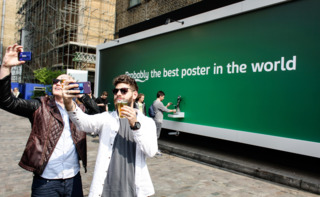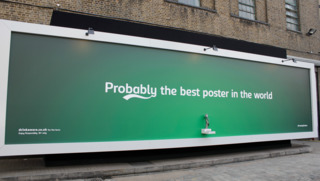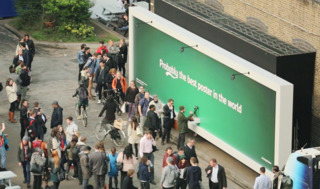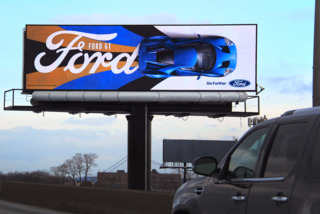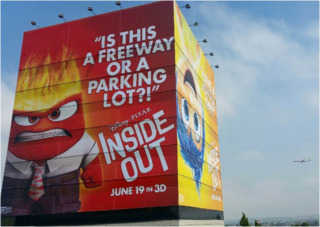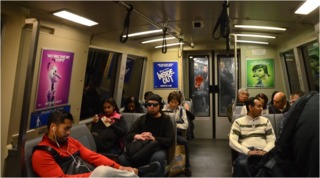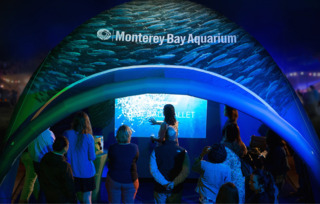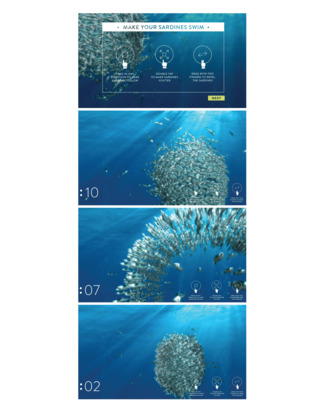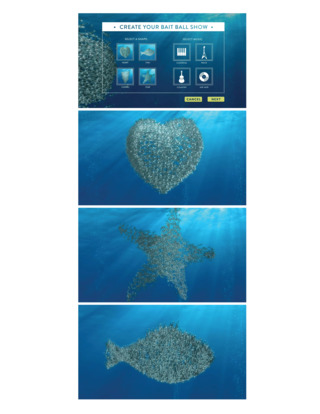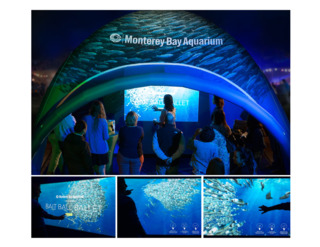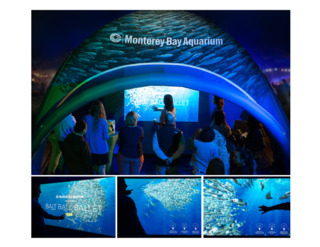Out of Home Ads: Bold & Effective, They Deliver a Powerful Message
Use of digital displays and measurement tools continues to grow in the out-of-home market segment.

Studies show that consumers spend 70 percent of their waking hours away from home, which means they are more exposed to OOH ads than nearly any other form of advertising, noted Stephen Freitas, Outdoor Advertising Association of America Chief Marketing Officer.
Three-quarters of total US adults notice advertising on static billboards, digital billboards, sides of public buses, bus shelters, taxi cabs, commuter rails, subways or any street level advertising such as kiosks or newspaper stands. Viewership among travelers is 84 percent.
If you had to pick on overarching trend in OOH ads, it would probably be the increased use of digital, not just as a display vehicle, but also as a measurement tool.
“While the entire OOH segment continues to see steady growth, digital OOH is increasingly proving its effectiveness with the use of high-tech measurement techniques that range from passive audience detection to mobile engagement and more. DOOH – along with more traditional forms of OOH – allow brands to communicate in compelling ways that can facilitate meaningful engagement with active people,” Freitas said.
“A clear indication of DOOH’s vitality is the attention it is garnering from technology companies,” he added. “Apple iBeacons are being integrated into more DOOH campaigns, facilitating mobile use to trigger purchases. Companies intrigued by the promise of the Internet of Things (IoT) are focused on DOOH, believing the OOH Industry will be a prime driver for what the IoT will ultimately become.”
What’s interesting about OOH ads, though, is that the effectiveness of the ads don’t depend on technology. Digital or not, it’s all about the message.
The most effective OOH ads have the potential to really grab the attention of consumers, as they commute to and from work via car, bus, train, or even walking.
To honor the best of out-of-home advertising, in April the Outdoor Advertising Association of America presented its 2016 OBIE Awards in Boca Raton, FL.
Greenville, SC-based Jackson Marketing Group, South Carolina’s second largest integrated marketing communications agency, won the Best Billboard Campaign award for its "2015 Season Kickoff" campaign for Big League World Series, an annual tournament held in nearby Easley for 16-18-year-olds. The BLBWS “2015 Season Kickoff” campaign also received two Gold ADDY Awards from the American Advertising Federation of Greenville.
One of the campaign images shows a batter completing a huge swing and a broken stadium light with sparks flying seen in the distance. The simple tagline reads, “Heads up”.
The campaign taps into the nostalgia of playing baseball as a kid, and getting that game-winning hit; it’s as American as apple pie.
Billboards work because they can tap into the familiar or create awareness of something new, said David Jones, CMO and executive vice president, Jackson Marketing. “They touch us on a lot of different levels.”
In this instance, the ads, which illustrate the drama of playing on a national stage, are there to remind the local citizenry that the annual event is coming, noted Jones
Jackson uses OOH ads as part of an overall marketing strategy.
For another client, a grocery store new to the market, the outdoor ads were used to announce the store to the market, to create awareness of the store’s presence. For that ad, which generated a lot of buzz, Jackson Marketing showed a package that could hold six muffins, with only five in the pack. The missing muffin? A 10-ft muffin sat on the ground in front of the billboard, on top of a car, now broken in two.
Also at the April OBIE awards, Downtown Partners Chicago received the Best Multi-Format Campaign award for its "Space is Freaking Awesome" ads for Adler Planetarium in Chicago.
The idea: What else is there that we know of that is truly more awesome than outer space?
At year’s end 2015, the Adler Planetarium topped 500,000 annual visitors for the first time since 1993, a 22 percent increase over 2014’s attendance.
While revamped exhibits are cited as part of the reason, the museum’s chief marketing and development officer, Marc Lapides, also pointed to the “Space is Freaking Awesome” ad campaign.
“Adler was a unique situation,” said Dan Consiglio, partner and creative director, Downtown Partners. “In Chicago, there are a lot of museums that get a lot more headlines. So we were looking to create our own space, to appeal to people who are likely to visit the museum—people who are curious. With Adler, we have the universe, so why not go big and have fun. Create ads that are mind-bending, that stop and make you think, give you a nugget to chew on.”
DPC uses the OOHA placement to its best advantage. For example, billboards seen by commuters are loud, bold, and take into account that the commuter is in all probability driving by quickly with little to read. The message has to hit quickly.
The billboards and bus signage were one part of the overall marketing campaign. In the Adler campaign as well as a slew of others, DPC used OOH ads to great effect. “If done correctly, it delivers a powerful message,” said Consiglio. “Its quick, bold, and powerful. The client takes a risk but it can effective.”
In addition to the Adler campaign, DPC has created several OOHA billboards, bus shelter signage, and oversized vehicle wraps as part of an overall marketing plan for nonprofits that lifted brand affinity and increased sales dramatically.
Its campaign for the Illinois Lottery led to the organization’s two best years ever. It’s DPC’s Luck Plan campaign for Get Covered Illinois won the Grand Global award—the top prize given at the 2015 Global Awards ceremony for healthcare and wellness advertising.
“For the Get Covered campaign, it was the second year of the Illinois Obamacare exchange, and they wanted to bring more millennials into the system, so we wanted to do something fun,” Consiglio explained. “We had a fake healthcare plan, the ‘lucky plan’, which showed pictures of someone injured, and what happens when you depend on ‘luck’. (Not anything good.) The consensus was that luck was not really a plan, and to get real healthcare go to the site.”
OOH ads work with millennials, said Consiglio, because “they are so top of mind.”
An ad campaign for the Greater Chicago Food Depository’s Rise and Shine Illinois looked to bring attention to the interrelated themes of hunger and learning. DPC created a series of bus shelter signage. One execution showed the text in a schoolbook in disarray around a bowl of cereal. The takeaway? When a child is hungry, it’s harder for the pupil to learn.
Our motto, said Consiglio is “be simple, be bold, be loud.”












































